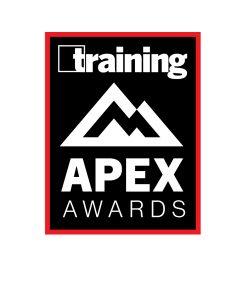
Nebraska Medicine developed the Think Like an Owner program to engage all colleagues in understanding the part each plays in maintaining their physical environment. It was deployed in conjunction with celebrating the important work Nebraska Medicine colleagues in the facilities department contribute.
Program Details
The content included in the week-long program was arranged around the chapter topics outlined by The Joint Commission, one of healthcare’s principle regulators. The hospital planned activities to minimize risks in the environment of care and performed weekly audits in all areas of the hospital—645 units/departments/clinics.
The week prior to the Think Like an Owner program, the coming week’s schedule of events was posted to the organization’s intranet. This included:
Monday, July 19: Physical Environment
- Focus on how you can help keep our facilities in good shape and what you can do to reduce expenses for repairs and replacements.
Tuesday, July 20: Life Safety
- Focus on fire safety and hazards.
- Fire extinguisher training/practice activity will be offered.
Wednesday, July 21: Emergency Preparedness/Security
- View a video that goes over what to do should there ever be an armed intruder.
Thursday, July 22: Hazardous Materials/Radiation Safety
- Learn, or refresh your memory, on how to locate the chemical inventory for areas via the NOW.
- How to properly wear a radiation dosimeter/badge and the importance of returning them, because each late return or missing badge costs $7.
Friday, July 23: Biomed/Equipment Management
- What are the most frequently damaged devices, and how much is it costing us?
- How to access Sodexos’ Website to submit a work order.
Included in the announcement was information explaining how choosing content/topics for the week was a collaboration between the Office of Health Professions Education, Communications, and the Environmental Quality and Compliance Committee (EQCC). There was an explanation of the EQCC (it is a multidisciplinary committee with representatives from the eight areas of care), and how it provides oversight and leadership to support a safe and effective environment for colleagues, patients, and visitors.
Nebraska Medicine used a variety of methods to present the information, including infographics, videos, graphs displaying data, and articles.
For the process of environmental rounding, managers and designated staff also were trained in the use of xapimed, a digital platform for performing observational assessments instead of recording on paper. Nebraska Medicine saw a major increase in compliance with regulatory requirements after moving to that format. This work was recognized with a first-place safety grant from Safety National.
Additionally, Nebraska Medicine moved to an intranet format (SocialChorus) where colleagues could comment on posted articles or ask additional questions. There was great interaction on several of the topics covered in the Think Like an Owner event—especially when the cost of replacing/repairing damaged equipment was reported at $600,000 in a year.
These topics were discussed at monthly departmental meetings, so colleagues would understand the importance of their actions in reducing sharps in linens, not damaging equipment or the physical building, and turning in their radiation badges at the correct time. This allowed time for additional questions or concerns to be expressed.
Additionally at several All Colleague Forums, senior leaders discussed the Think Like an Owner program and the various subtopics included within it. Each day, there is a daily safety huddle with leaders from all departments within the hospital (approximately 50 attendees). During that meeting, the number of sharps in linens is reported daily and damaged equipment dollar amounts are reported weekly. These metrics are made available to all staff via their managers.
Long-term there will be periodic updates via the All Colleague Forums and follow-ups in areas not performing the audits needed or experiencing high dollar amounts of damaged equipment to determine the barriers to the needed levels of performance.
Results
Some 5,548 audits were completed over 646 units/departments/clinics resulting in:
- A 49.75 percent increase in reported infrastructure damage
- A 20.73 percent increase in reported electrical problems
- A 35 percent decrease in environmental hazards entered into the safety incident reporting system
- A 4 percent decrease in Workers’ Compensation claims related to stepping on or striking against a hazard or object, and a 3 percent decrease in claims related to slips, trips, and falls
- Reduction to $0 in average liability payouts per year related to slip-and-fall environmental hazard injuries of $10,000



